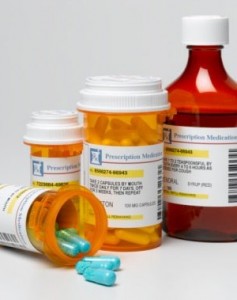How to get a discount on expensive health care prescriptions
 For Top Health Care Providers in NJ visit: NJTopDocs.com
For Top Health Care Providers in NJ visit: NJTopDocs.com
(BPT) – After Carol Vanderploeg’s family experienced a double-job loss last spring; she worried about affording the $1,300 average monthly cost of her husband’s epilepsy prescriptions.
The couple only had enough pills to last a few months when they moved to Augusta, Ga., in search of new jobs. Even after finding another job at Delta Air Lines, the potentially high refill cost kept Vanderploeg apprehensive.
“The thought of what it was going to cost us was overwhelming,” she says.
Vanderploeg is not alone. In this struggling economy, many Americans face the painful choice of filling a prescription or eating or paying for housing. Forty-eight million Americans did not fill a prescription due to cost in 2010, according to a report released by the non-profit Commonwealth Fund.
Not taking medication as prescribed leads to negative health consequences for individuals and higher costs for everyone, says Sharon Galzarano, a Washington, D.C.-based pharmacist of 20 years.
“Patients can end up hospitalized, or their medical condition can worsen because they did not take their medication as their health care provider directed,” Galzarano says. “This is especially important for people with chronic medical conditions like diabetes or high blood pressure.”
The most cost- effective way to manage your health is to develop a routine of consistently adhering to your medication regimen, Galzarano says. Good habits like these help prevent long-term complications such as blindness in people with diabetes or a stroke in patients with heart disease, she says.
“Taking medication as directed could prevent emergency room visits and hospital admissions, which result in significant out- of- pocket costs for patients, as well as the health care system,” Galzarano adds.
Spending a dollar on high-blood pressure medication saves the community $10 by eliminating the need for additional hospitalizations, tests, operations and other interventions, according to CVS Caremark. Likewise, per-dollar savings for congestive heart patients were $8, nearly $7 for diabetes patients and around $3 for cholesterol patients.
To be sure, the entire health care system pays when consumers decide not to take their medications as prescribed. For example, the New England Health Care Institute reported in 2009 that patients who did not take their medicine properly cost the system an additional $290 billion annually.
Relieving the burden
Luckily, Vanderploeg’s story had a happy ending. By using a FamilyWize Prescription Drug Discount Card, she brought down the cost of her husband’s 180-pill, three-prescription order to $146, nearly an 89 percent reduction.
She’s just one of 5 million Americans who saved more than $430 million using the discount card. People who used the card to purchase diabetes and heart disease medicines also saved $1.2 billion in related health care costs.
“FamilyWize makes it possible for our neighbors who are struggling, many of them older folks, to buy both the medicine they need plus pay for necessities like food, utilities and clothing,” says Dennis Carmen, president and CEO of the United Way of Greater Plymouth County, Mass.
“To help reduce the cost of prescription drugs, a prescription drug discount card is now available at no cost to patients; there are no age restrictions or income requirements to access the card,” says Dan Barnes, FamilyWize CEO.
Sign up for a free FamilyWize Prescription Drug Discount Card by contacting your local United Way, visiting www.familywize.org or texting “Family” to 700700 to have an electronic card sent to your phone. Anyone can get the card, which works like a coupon to fill all FDA-approved medications at more than 63,000-participating pharmacies, including Walgreens, Rite Aid, CVS, Walmart, Target, Kmart, Safeway, Kroger, Albertson’s, Publix, Stop & Shop, SUPERVALU, Ahold, Costco and Sam’s Club.
Card users save money eight out of 10 times. On average, people will shave more than 35 percent, roughly $20, off the retail cost of each prescription. However, savings can be much higher, especially if card users are buying generic medications.
This month, Vanderploeg saved $1,154 on her husband’s medicine. That’s a $13,848 year-end savings if his prescriptions stay the same.
“The peace of mind emotionally and financially has been a life saver,” she says.